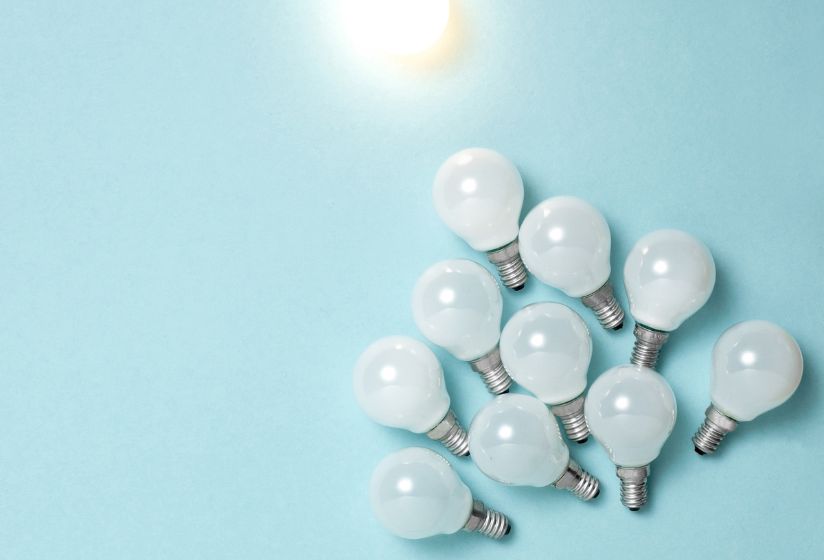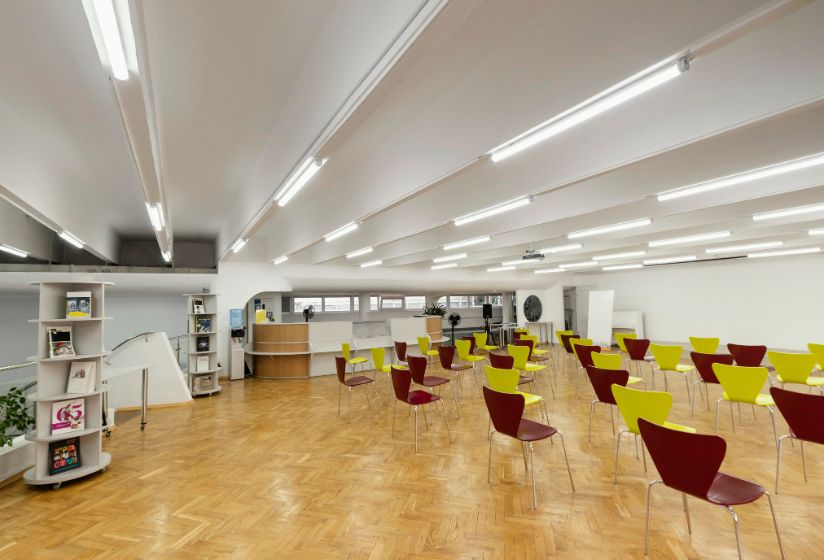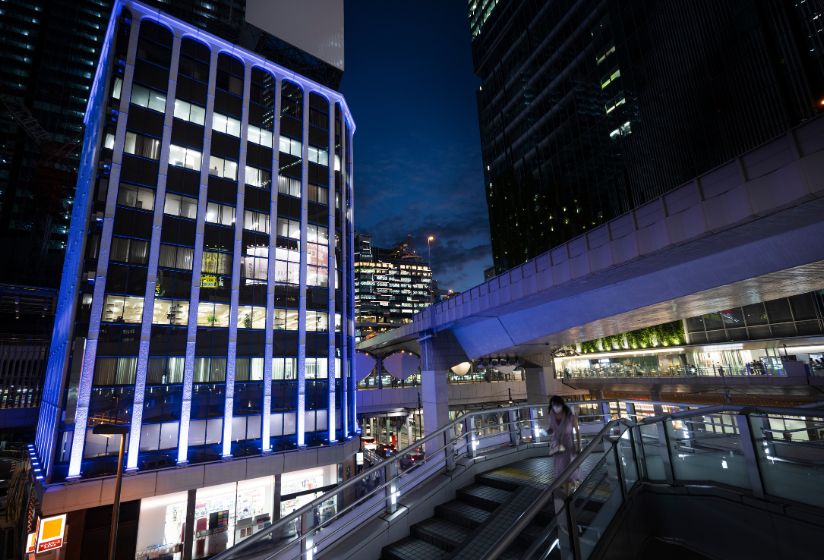Incandescent vs LED Bulbs: What’s the Difference and Which One is Right for You?

Understanding the differences between incandescent and LED bulbs is key to determining which lighting options work better for your situation. These two types of bulbs have unique characteristics: energy usage, lifespan, and environmental footprint, which can impact your electric bills in the short and long term. You can choose the most suitable option by considering factors like efficiency, price, and how and where the lighting will be used. Whether your goal is to reduce energy expenses, increase lighting quality, or lower your negative impact on the environment, understanding these differences will help you make better and more cost-effective decisions for your home or business.
What Are Incandescent Bulbs?
Incandescent bulbs are one of the oldest and most familiar types of light bulbs. They operate by passing an electrical current through a filament, a thin wire typically made from tungsten, which heats due to electric resistance until it produces visible light. Incandescent bulbs are inexpensive and straightforward but far less energy-efficient than newer lighting solutions, such as LEDs.
Key Characteristics and Pros of Incandescent Bulbs
- Warm, Soft Light: Incandescent bulbs provide a warm, yellow hue that is frequently characterized as soft and welcoming. This makes them perfect for establishing warm and cozy settings in lounges, bedrooms, and other places where comfort is key.
- Instant Full Brightness: Incandescent bulbs reach full brightness immediately after switching on. Unlike some energy-saving options (such as compact fluorescent bulbs, or CFLs), incandescent bulbs don’t require a warm-up period to reach full brightness.
- Low Initial Price: Incandescent bulbs usually have a lower upfront price compared to more energy-efficient lighting, making them a budget-friendly option for initial lighting costs.
- Ease and Compatibility: These bulbs have been around for quite some time, so most fixtures accommodate them easily, making them a versatile option.
Common Uses of Incandescent Bulbs
- Living Rooms and Bedrooms: For areas where you want relaxation rather than the brightest lights, the warm light of incandescent bulbs is ideal.
- Decorative Lights: A range of decorative light fixtures, from chandeliers and pendant lights to sconces, utilize incandescent bulbs to accentuate the beauty of the area.
- Table Lamps and Floor Lamps: Incandescent bulbs are a common option in areas such as reading corners or accent lighting in other indoor spaces.
What Are LED Bulbs?
Key Characteristics and Pros of LED Bulbs
- Energy Efficiency: The biggest benefit of LED bulbs is that they are energy efficient. They use up to 75% less energy than incandescent bulbs, making them an excellent way to reduce electricity bills. The bulb’s state-of-the-art semiconductors transform energy into light rather than heat, making it more efficient.
- Long Lifespan: LED bulbs are built to outlast traditional incandescent bulbs. An incandescent bulb might burn out after about 1,000 hours, but an LED can last 15,000 to 50,000 hours, depending on its quality and usage. As a result, you often won’t have to change any bulbs, leading to long-term savings.
- Lower Heat Generation: LEDs give off very little heat, in contrast to incandescent light bulbs, which emit energy mostly as heat. This makes them safer, particularly in places where heat might be an issue, like kitchens or near delicate materials.
- Bright High-Quality Focused Light: LED bulbs produce bright, more focused light than incandescent or fluorescent bulbs, operating more efficiently. LED lights have varied options that span a spectrum of cool to warm light, making them suitable for a wide range of applications, including task lighting and mood lighting.
- Eco-friendly: Compared to incandescent bulbs, LED bulbs have an environmentally friendly manufacturing process. No toxic material like mercury is released upon the breaking of the bulbs, as happens with CFL bulbs. Their longevity results in fewer bulbs being tossed into landfills, helping to reduce waste.
- Dimmability and Control: Many LED bulbs work with dimmer switches, giving users the flexibility to vary the intensity of light as per their requirements. This attribute gives LED bulbs excellent versatility, making them suitable for everything from focused task lighting to soft ambient lighting.
Common Uses of LED Bulbs
- Home Lighting: LEDs are becoming the go-to solution for general home lighting, task lighting, and accent lighting. They can be easily accommodated in ceiling fixtures, downlights, chandeliers, as well as outdoor lighting like garden lights and security lights.
- Commercial Spaces: LED bulbs are used for general lighting, spotlighting, and task lighting in offices, retail stores, and warehouses. Their long life and good efficiency make them an excellent option for enterprises trying to lower energy use and improve maintenance costs.
- Street Lights: Cities everywhere are beginning to swap out old streetlights for LEDs, reducing energy use and increasing visibility. LED streetlights not only provide superior lighting but also lower the city’s carbon footprint.
- Automotive Lighting: LED bulbs are widely used in automotive applications, including headlights, brake lights, and interior lighting, providing better visibility and more energy efficiency than traditional lighting options.
- Decorative or Specialty Lighting: LEDs are widely used for decorative applications, such as holiday lights, under-cabinet lighting, and backlit displays. They can be custom-built from various colors and sizes, making them perfect for unique lighting effects.
We specialize in delivering tailored electrical services to meet the unique needs of your business. From installations and energy-efficient upgrades to round-the-clock emergency repairs, our team ensures your operations stay uninterrupted.
Incandescent vs LED: A Detailed Comparison
Energy Consumption
Lifespan
The most noticeable difference between incandescent and LED lights in your home is their lifespan. Incandescent bulbs last about 1,000 hours, while LED bulbs last 15,000 to 25,000 hours. This longevity translates to lower replacement frequency over time and hence less waste, making LEDs a more sustainable option in the long run.
Cost
Environmental Impact
Which One is Right for You?
- Energy Efficiency: If cutting down on energy use and costs is your priority, then LEDs win.
- Budget: If you’re on a tight budget, incandescent bulbs may be cheaper to buy initially. But remember how much you will save when you switch to LEDs.
- Usage: If the bulb is to be switched often or in places where light is needed continuously (like office spaces, kitchens, and outdoor places), LEDs are a more cost-efficient and cost-effective long-term offering.
- Lighting Atmosphere: If you want warm, ambient light for a cozy atmosphere, incandescent bulbs are still best for some areas like living rooms or bedrooms.
Why Choose All Reach Lighting for Commercial Lighting Services?
By leveraging our extensive expertise in energy-efficient technologies, we are well-equipped to assist you in transitioning to LED lighting solutions. This transition not only provides lighting that is significantly more cost-effective when compared to traditional lighting solutions, but it is also much better for the planet, contributing to a more sustainable future. Commercial lighting, especially for environments such as offices and warehouses, needs to be dependable and meet specific standards to ensure optimal performance. Here at All Reach Lighting, we pride ourselves on working one-on-one with each customer to help create customized solutions tailored to their unique needs. Our goal is to enhance safety, improve visibility, and boost energy efficiency, ensuring that your lighting solutions are both effective and sustainable.


